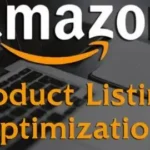Amazon’s marketplace is a dynamic environment where millions of products vie for the attention of consumers. For sellers, this means that standing out is crucial to success. Central to this is Amazon’s A9 algorithm, which determines the visibility and ranking of product listings. Understanding how this algorithm works and how to optimize your listings accordingly can significantly impact your sales. In this blog, we’ll break down Amazon’s algorithm in detail and explore how effective listing optimization can drive your business forward.
What is Amazon’s A9 Algorithm?
The A9 algorithm is Amazon’s proprietary search engine, responsible for ranking products in search results based on various factors. Its primary goal is to match customers with the products they’re most likely to purchase, ensuring a positive shopping experience. Unlike Google’s algorithm, which focuses heavily on backlinks and external SEO factors, Amazon’s A9 is product-centric, prioritizing relevance and conversion potential.
Key Features of Amazon’s A9 Algorithm
Let’s dive into the essential features and concepts of the A9 algorithm:
1. Relevance
Relevance is the first and most crucial factor the A9 algorithm considers. It determines how closely a product listing matches a customer’s search query. Amazon’s goal is to present the most relevant products to the user, which means your product title, bullet points, and descriptions must contain the right keywords.
Example: If a customer searches for “wireless Bluetooth headphones,” a product listing titled “Best Wireless Bluetooth Headphones – Noise Cancelling, Long Battery Life” is more likely to rank higher than a generic “Bluetooth Headphones” listing. The inclusion of relevant keywords such as “wireless,” “Bluetooth,” and “noise-cancelling” directly aligns with the search intent.
Tools & Tricks: To find relevant keywords, sellers can use tools like Helium 10, Jungle Scout, or Sonar. These tools help identify high-traffic keywords and phrases that should be incorporated into your listings.
Stat: According to a study by Feedvisor, 70% of Amazon customers never scroll past the first page of search results. This highlights the importance of relevance and keyword optimization in your listings.
2. Conversion Rate
Amazon prioritizes listings that have a higher conversion rate. The conversion rate is the percentage of customers who purchase a product after viewing its listing. A high conversion rate signals to Amazon that the product is desirable and relevant, leading to higher rankings.
Example: A product listing with high-quality images, a competitive price, and strong customer reviews is more likely to convert visitors into buyers. If your product consistently converts well, Amazon’s algorithm will reward you with better visibility.
Tools & Tricks: Using A/B testing tools like Splitly can help sellers experiment with different listing elements, such as titles, images, and bullet points, to determine which combinations lead to higher conversion rates.
Stat: Products with enhanced content, such as Amazon A+ Content, have been shown to increase conversion rates by up to 5.6%, according to Amazon.
3. Customer Satisfaction and Retention
Amazon values customer satisfaction and retention, which are reflected in product reviews, ratings, and return rates. Products with higher ratings and positive reviews are more likely to rank higher because they indicate customer satisfaction. Conversely, products with frequent returns or negative reviews may be penalized.
Example: If a product consistently receives 5-star reviews praising its durability and quality, Amazon will rank it higher than similar products with mixed reviews.
Tools & Tricks: Monitor customer feedback using tools like FeedbackWhiz or AMZFinder. These tools allow you to track reviews, respond to customer queries, and manage your reputation effectively.
Stat: A study by BrightLocal found that 91% of consumers trust online reviews as much as personal recommendations, underscoring the importance of maintaining a high level of customer satisfaction.
4. Pricing Competitiveness
Price is a significant factor in the A9 algorithm. Amazon favors competitively priced products because they are more likely to convert. If your product is priced too high compared to similar offerings, it may be ranked lower.
Example: If two sellers offer the same product, but one is priced $5 cheaper, Amazon is likely to rank the more affordable option higher, assuming all other factors are equal.
Tools & Tricks: Use repricing tools like RepricerExpress or Informed.co to ensure your product prices remain competitive in the marketplace.
Stat: According to Statista, 82% of U.S. Amazon Prime members said that pricing is one of the key reasons they shop on Amazon. This makes pricing a critical component of your listing strategy.
5. Fulfillment Method
The method by which your products are fulfilled also affects your ranking. Amazon favors products that are fulfilled by Amazon (FBA) because they can guarantee quick delivery times and superior customer service. Products fulfilled through FBA are more likely to win the Buy Box and rank higher in search results.
Tools & Tricks: Consider using Amazon’s Multi-Channel Fulfillment (MCF) service if you sell on multiple platforms. This ensures that you can leverage Amazon’s logistics network even for non-Amazon orders.
Stat: Amazon FBA sellers experience an average increase in sales by 30-50%, according to Amazon, which is a compelling reason to consider using FBA.
6. Sales Velocity
Sales velocity refers to the rate at which your product is selling. The A9 algorithm considers sales history and velocity as indicators of a product’s popularity and relevance. The faster a product sells, the higher it is likely to rank.
Example: A product that sells 100 units per day will likely rank higher than a similar product that sells only 10 units per day, even if the latter has better reviews.
Tools & Tricks: Use promotions, lightning deals, or Amazon PPC campaigns to temporarily boost sales velocity. Tools like Sellics or Teikametrics can help manage these campaigns effectively.
Stat: According to a study by CPC Strategy, sellers who run Amazon PPC campaigns see a 150% increase in sales velocity, which can significantly boost their organic rankings.
Conclusion: The Power of Listing Optimization
Understanding Amazon’s A9 algorithm is essential for any seller looking to succeed on the platform. By focusing on relevance, conversion rates, customer satisfaction, pricing, fulfillment methods, and sales velocity, you can optimize your listings to align with the algorithm’s preferences. This, in turn, will improve your product visibility, attract more potential buyers, and ultimately drive sales.
Remember, Amazon’s marketplace is competitive, but with the right strategies and tools, you can ensure that your products not only stand out but also achieve sustained success. By investing in Amazon listing optimization services, you can take full advantage of the A9 algorithm and maximize your potential on the world’s largest e-commerce platform.










